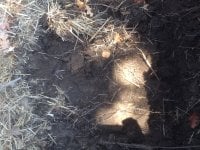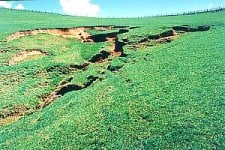I have been thinking about this post and read this information about prairie grasses and grazing. As I understand it, mob grazing creates and environment conducive to the existence of microbial soil activity by shading and cooling the ground surface with bent over and trampled grasses. But the long roots are a strategy for drawing nutrients from deep beneath the soil surface, so perhaps the benefit of mobbing is more to prevent the destruction of the top of the plant than to enrich the soil.
I don't mob graze, but I really like the idea of native ecosystem restoration.
an excerpt:
http://prairieecologist.com/2011/11/28/a-skeptical-look-at-mob-grazing/
Impacts on Soil Organic Matter
Returning to the purported benefits of mob grazing, let’s look at soil organic matter first. While there are various explanations of how mob grazing affects organic matter in the soil, the general idea seems to be that mob grazing cattle eat about 60 percent of the standing vegetation and stomp the remaining 40 percent into the soil. Thus, soil organic matter increases and becomes more productive. This has never jived with my understanding of soil organic matter (soil carbon) production, so I checked with four prominent scientists around the country who study soil nutrient cycling, including soil carbon. When I asked them if the claims from mob grazing advocates made sense, their response was unanimous and strikingly blunt. To quote one of them, “That’s totally bogus”.
In reality, soil organic matter is formed mainly by below ground processes, including root decomposition, root exudates, and mycorrhizal carbon inputs. In prairies, a substantial percentage of plant roots are abandoned to decompose each year and replaced with new roots. Those old roots provide organic matter in abundance, and more importantly, that organic matter becomes a stable part of the soil profile – and is added to and enhanced by the other two processes listed above. My panel of experts said that stomping vegetation into the soil might provide a slight and temporary increase in organic matter near the soil surface, but that it would be unstable and wouldn’t last long. It’s the stable supply of organic matter deeper in the soil profile that actually drives plant productivity, and that supply comes from plant roots themselves. In fact, the experts suggested that the kind of vegetation stomping I asked them about was likely to have fairly negative consequences. They thought that soil compaction and disruption of soil structure as a result from heavy trampling would probably decrease -not increase - plant productivity. None of this means soil organic matter can’t increase under mob grazing, but any increase would be due to the same below ground processes listed above.


